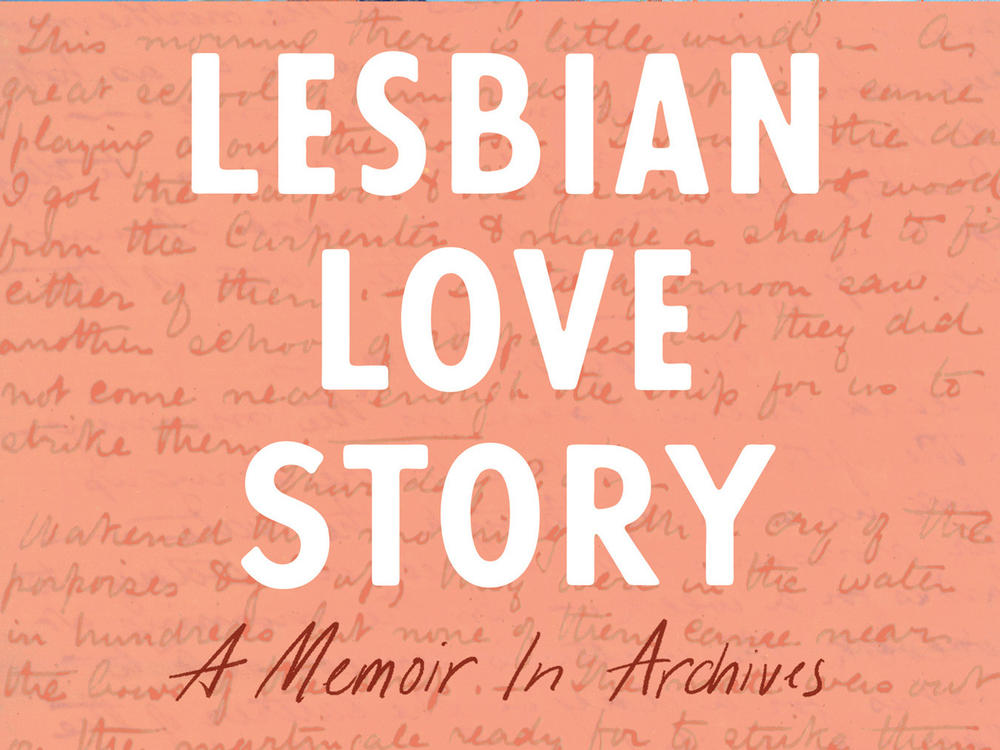Section Branding
Header Content
'Lesbian Love Story' unearths a century of queer romance
Primary Content
When publicist and writer Amelia Possanza moved to Brooklyn, N.Y., she found herself, for the first time, surrounded by queer stories — on historical placards, on her LGBTQ swim team and on her television screen.
But these stories were rarely about lesbians — and even more rarely — lesbians in love. So began Possanza's journey into the archives to uncover the romances and role models written out of history.
"I like to think of this project as me taking on being the publicist for lesbians," Possanza tells me.
Possanza's book Lesbian Love Story: A Memoir in Archives focuses on seven couples, each representing a different era in the 20th century. And, for the most part, they are not well-known figures.
"It's not, 'oh, here's the story of how Eleanor Roosevelt was secretly a lesbian,' or 'here is the story of Emily Dickinson, who was maybe in love with her brother's wife,'" Possanza says.
For her research, Possanza dove into the archives, searching for people who, she says, "lived daringly and left some record of living a queer life."
There's also a surprising amount about swimming in the book. Part of that, Possanza says, could be her own bias. She swims for a gay and lesbian aquatic team in New York (it's actually the largest LGBTQ swim team in the world).
Another part is just feeling free in your own body.
"One sort of unexpected thing that came up for me in writing is there's so much policing of what women, lesbians, queer people wore — and that policing actually became a way of just policing queerness in general," Possanza says. "Today we have drag bans in certain states. And before those existed — before explicit terminology to ban these things — a lot of it was based on what you wore. And I think the beach was somewhere to be free of that, especially if you found a nude beach, if you could be in the water."
Possanza did not grow up with many stories about lesbians. But, she says they're right there, even when the word is not used, even when that part of their story is erased.
"I come from a really nerdy family of readers. My father is a classicist and my mother is a librarian. And I think they very much raised me to believe that if you're going to have an experience and you're nervous about it or you don't know about it, you can go read a book about it," she says.
It's easy to find books about transitions that everyone goes through — getting ready for school or moving away from home. Now Possanza's memoir fills a space long absent from bookshelves.
"I realized that there actually weren't a lot of stories that I had about lesbians to guide me. And so I think doing this project made me start thinking about what gets you remembered, what generates records," Possanza says. "You know, prisons generate records, governments generate records. Sometimes being in love doesn't generate records."
But Mary Casal and Mabel Hampton did leave records. Casal met the love of her life in a hotel lobby in 1892 — and then wrote her own memoir. Hampton stayed with her partner for 40 years — and lent her voice to the Lesbian Herstory Archives, a New York City-based museum dedicated to preserving lesbian history.
Too often, queer stories end in tragedy. What binds these stories together is how these lesbians create pockets of safety, security and community, even in the most hostile circumstances.
The audio and web versions of this story were edited by Reena Advani.
Copyright 2023 NPR. To see more, visit https://www.npr.org.


